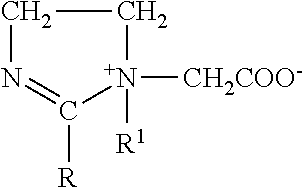Stabilised potassium bicarbonate and low-sodium leavening compositions
a technology of potassium bicarbonate and composition, which is applied in the direction of wet separation, synthetic resin layered products, natural mineral layered products, etc., can solve the problem that the amount required is not sufficient to affect the taste of the end product, and achieves the effect of effective protection, easy to apply, and increase particle siz
- Summary
- Abstract
- Description
- Claims
- Application Information
AI Technical Summary
Benefits of technology
Problems solved by technology
Method used
Image
Examples
example i
[0067]Potassium bicarbonate having D50 of 500μ was milled to two granularities, having D50 of 150 and 35μ respectively in an air classifier mill, and mixing continued in a high shear blender for 5 minutes. The preparations were repeated in admixture with 0.5% food grade calcium soap. The products were subjected to an accelerated ageing test at 20° C. and a controlled relative humidity of 70%. After 96 hours both uncoated samples had agglomerated into a dry cake. The two coated samples were both free flowing powders.
example ii
[0068]A baking powder was prepared by mixing 36% of the 35μ coated potassium bicarbonate of Example I, 42% disodium pyrophosphate and 22% starch. The powder was more stable, and had superior flow properties compared to a powder containing uncoated bicarbonate mixed with 3% silicon dioxide, based on the weight of bicarbonate.
example iii
[0069]The baking powder of Example II was used in the following recipe:
100 g—Plain flour (10 to 15% moisture)
5.5 g—Baking flour
5.5 g—Buttermilk powder
19.3 g—Castor sugar
25.0 g—Butter
7.8 g—Egg
42 g—Water
[0070]All dry ingredients were weighed and sieved into a mixing bowl and blended for 1 minute. The butter was slowly added in small lumps and beaten for 5 minutes. The liquids were added over 15 seconds and the mixture beaten for 15 seconds and then blended with a dough hook for 1 minute. The floured dough was placed on a floured surface, rolled out and cut into 2 inch circles, which were baked at 220° C. for 16 minutes. The scones were free from visual spotting and were in specification for shape and size. There was no effect on flavour detectable.
PUM
| Property | Measurement | Unit |
|---|---|---|
| Percent by mass | aaaaa | aaaaa |
| Percent by mass | aaaaa | aaaaa |
| Percent by mass | aaaaa | aaaaa |
Abstract
Description
Claims
Application Information
 Login to View More
Login to View More - R&D
- Intellectual Property
- Life Sciences
- Materials
- Tech Scout
- Unparalleled Data Quality
- Higher Quality Content
- 60% Fewer Hallucinations
Browse by: Latest US Patents, China's latest patents, Technical Efficacy Thesaurus, Application Domain, Technology Topic, Popular Technical Reports.
© 2025 PatSnap. All rights reserved.Legal|Privacy policy|Modern Slavery Act Transparency Statement|Sitemap|About US| Contact US: help@patsnap.com



